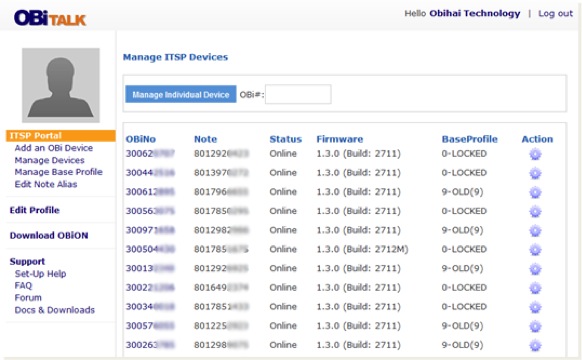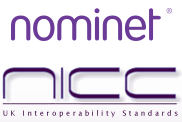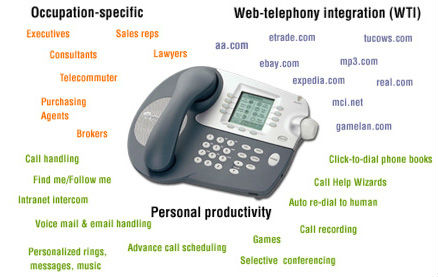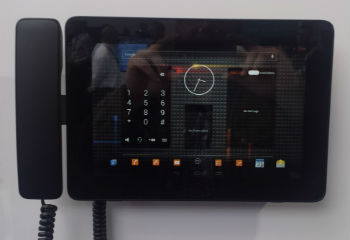Trefor.net welcomes VoIP Week contributor Dan Winfield, Co-Founder and CEO of Voxhub and 2014 ITSPA Council member.
Net neutrality is a hot topic amongst those in the VoIP industry and something all VoIP providers have had to deal with in one form or another, usually looming its head in the land of large network providers and mobile networks. Did you know, though, that there are many places in the UK where you are not free to use your favourite VoIP provider? No joke, as difficult as it is to believe, there are still places in 2014 that judge based on the protocol. And these places are on every block, every city and are allowed to openly discriminate.
Yes, I am talking about serviced offices.
VoIP services are about flexibility, and ironically this is what serviced offices are supposed to offer. So why do I put my head in my hands when I hear that a client is moving to a serviced office? In my experience, Voxhub customers making such a move typically have to leave because they are not allowed to use our service or they cannot do so due to firewall blocking. Also, much stress is generated during such ‘events’ due to customers becoming annoyed with the situation and, in the case of blocking, are often caught between two parties with no service! Of course, at Voxhub we do our best to find a diplomatic solution for any customers wanting to move to a serviced office, but it isn’t a task we like to undertake.
Before going any further I should say that I am fully aware of the financial dynamics of serviced offices, and the fact that they often have to invest in telephony for whole buildings in advance and figure out how to somehow repay this investment. The grey area in all of this — and where the real problem lies — is that all serviced offices supply ‘Internet’ to their customers. Thus, as ‘VoIP services’ are synonymous with ‘Internet’, such services should not be blocked on the grounds that they compete with the in-house telephony VoIP or otherwise.
So why do I care? Let me quote Bender, that wise robot from the much loved cartoon “Futurama”:
“This is the worst kind of discrimination. The kind against me!”
I’ll explain. I have spent much of the last 6 months looking for office space for our Voxhub team in London, and as such have been forced to enter the underbelly of the office world as a potential customer. We sought our own office, but also investigated the serviced office option. Normally I would cross the road when I see a serviced office for fear of being jeered at, but there is a disturbing new type that dress themselves up as modern, fun and ‘Internet’ savvy. They even have high ceilings, wooden floors, unfinished walls and random furniture in corners of rooms. I was fooled, enough at least to give the concept a chance.
In one case, I was actually quite near to signing up with one of these new breed serviced offices. Naturally, I had asked questions about using our own phones, but I always had a sneaky feeling that they didn’t understand. At the very end of the process, in fact, they asked me how many of their phones I would want, and they even went as far as to increase the quoted rent costs when I said they could keep their phones because I didn’t need them. They tried to concede, but then stupidly said I had to pay an extra charge based on the number of phones in the room. Anyone who has seen our desks knows that this is a dumb thing to say, as during service development or trials we often have upwards of three or four phones on a single desk! Of course, I told them to stuff it.
I decided to make one last set of enquiries for serviced offices to see if my prejudice is correct. Sadly, it only made it clearer in my mind that these businesses need to be slapped into shape when it comes to understanding net neutrality.
- All advertised Internet but gave no warning that certain services were not allowed.
- Many very clearly indicated that I could not use VoIP telephones.
- Some said I could use Skype but not the Voxhub service.
- Some didn’t know anything but told me I had to direct my question to their telecom provider.
I had a very colourful call with one lady that highlights the problem. She told me that for our service I was allowed to use a software phone like Skype, that I wasn’t allowed to use a hardware VoIP phone, that I was allowed to use a laptop with a headset (and if the headset looked like a phone handset, that was also OK), and that I wasn’t allowed to use a laptop that looked like a phone with my headset from the previous question that looked like a handset.

As you can no doubt imagine, at this point I was trying not to laugh and the woman was probably wishing she hadn’t spoken to me. I snuck in one last question about using a phone that looked like a laptop, but I think by that point she realised something was going on and made an excuse about me needing to speak to someone more technical.
In all seriousness, by the end of the process I felt that not only was VoIP effectively blacklisted, but that my business wasn’t even allowed to trade in a serviced office without using someone else’s phones or paying danger money for being there!
A serviced office, in my opinion, should be considered a service provider and be included as part of any regulatory requirements and / or best practices, especially if they have outsourced their operations to a service provider that in any other environment would not operate this type of practice.
At day’s end, I am extremely glad that we were pushed away from taking a serviced office. Voxhub has now been accepted as a member of TechHub (we love hubs) and we are moving into our new studio space in Old Street today!
VoIP Week Posts:













 It was not that long ago that phone companies — and their charges for long distance calls — could not be avoided. We don’t often think about it now, but calling overseas used to be expensive and somewhat complicated. It would require a certain calling plan and a special way of dialing the traditional telephone. Then along came the ability to make calls over the Internet, and now we don’t think twice about having long conversations with friends traveling abroad or scheduling conference calls with business associates in other countries. Apps such as Skype, Google Voice and Tango have made VoIP part of how we live and work, and whether the call we are on is connected via VoIP or not is no longer relevant. And the fact that we know hav the ability to use these apps on any device — a phone, tablet, or computer — means we can talk to anyone, anywhere, at any time. Thank you, VoIP, for this seamless and standard method of communication now at our fingertips.
It was not that long ago that phone companies — and their charges for long distance calls — could not be avoided. We don’t often think about it now, but calling overseas used to be expensive and somewhat complicated. It would require a certain calling plan and a special way of dialing the traditional telephone. Then along came the ability to make calls over the Internet, and now we don’t think twice about having long conversations with friends traveling abroad or scheduling conference calls with business associates in other countries. Apps such as Skype, Google Voice and Tango have made VoIP part of how we live and work, and whether the call we are on is connected via VoIP or not is no longer relevant. And the fact that we know hav the ability to use these apps on any device — a phone, tablet, or computer — means we can talk to anyone, anywhere, at any time. Thank you, VoIP, for this seamless and standard method of communication now at our fingertips.






 Now to be fair, there is some light in the sky these days regarding inter-network IM capability. For instance, with Yahoo Messenger you can add and communicate with contacts using Windows Live™ Messenger, and you can add your AOL AIM contacts into Google Talk. Such functionalities, however, are the result of agreements reached between the networks, agreements in which a bridging of two (or more) proprietary protocols has been put in place not to open communication up but to simply extend one IM provider’s boundaries to include those within another’s.
Now to be fair, there is some light in the sky these days regarding inter-network IM capability. For instance, with Yahoo Messenger you can add and communicate with contacts using Windows Live™ Messenger, and you can add your AOL AIM contacts into Google Talk. Such functionalities, however, are the result of agreements reached between the networks, agreements in which a bridging of two (or more) proprietary protocols has been put in place not to open communication up but to simply extend one IM provider’s boundaries to include those within another’s. 



